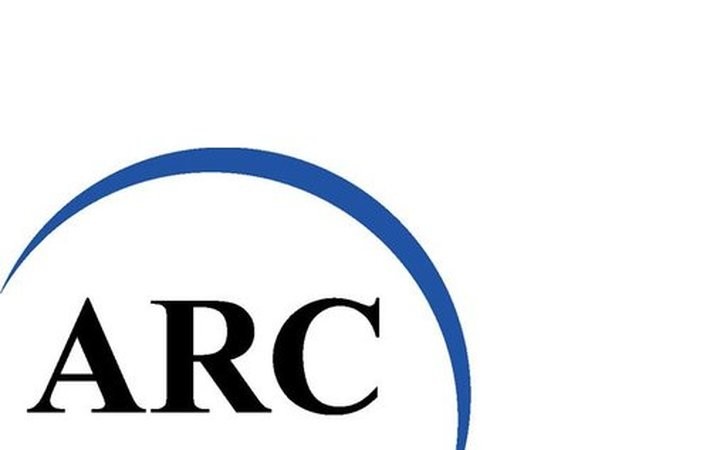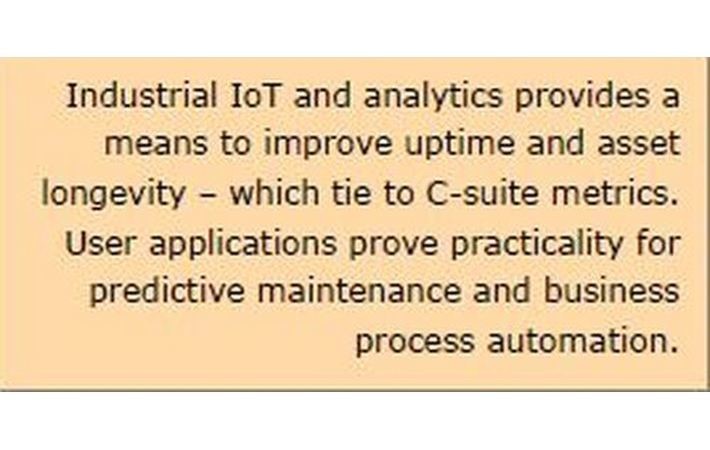
Published on 11/09/2016 | Operations
The confluence of recent Industrial IoT (IIoT)-related advancements such as big data, low-cost cloud computing, and advanced analytics enables a new class of applications for improving asset performance. Higher uptime and asset longevity are important KPIs since they benefit C-suite metrics in the P&L statement and balance sheet. Using IIoT and analytics for condition monitoring and predictive maintenance can help ensure high uptime for critical assets – particularly among those 82 percent of assets having a random failure pattern. IIoT provides an opportunity to significantly improve operational performance with higher reliability, business process automation, and even transformative changes.
IIoT connects intelligent physical entities (sensors, devices, equipment, and products) to internet services and applications. IIoT architecture builds on current and emerging technologies such as intelligent equipment with an IP address, machine-to-machine (M2M) communications, mobility, cloud computing, big data, analytics, visualization tools, and machine learning. No substantial technological breakthroughs are needed for industrial solutions to utilize IoT-based technologies (in Europe, the term “Industrie 4.0” has gained significant traction). With the underlying product development and proven case stories in place, adoption is advancing rapidly.
Segmenting Consumer and Industrial IoT – Fad vs. ROI
When forecasts for IoT adoption include consumer products like smartphones, wearable fitness trackers, smart thermostats, connected cars and inclusion in other existing products, the huge numbers typically dwarf industrial applications. Particularly at the low price points for most consumer IoT products, the purchasing decision can be made based on a whim and can exhibit fad-like behavior.
This type of buying behavior is nearly non-existent in the industrial sectors. Organizations require a benefit and corresponding business case that shows either a return on investment (ROI) or risk reduction (environment, health and safety). Purchase approval involves a business process with checks and balances. Usually, a sponsor investigates, understands how the benefit will be derived, and makes a proposal. Management reviews and either approves or doesn’t approve. Decisions are made in a rational, business-driven manner.

Historians and analytics have been around for at least three decades. In that time, the effect of Moore’s Law has vastly improved data storage and computing capacity. Also, the number of intelligent sensors and devices feeding data has expanded. This confluence of big data, cheap cloud computing, and advanced analytics enables a new class of applications.
Analytics have become pervasive for finding value that had been “hidden” in the data. Standardized platforms – like IBM’s Bluemix platform – reduce the friction in terms of engineering and programming investments needed to implement an application. Implementation costs and ease-of-use have significantly improved, driving acceptance.
Project risk has been lowered with inexpensive IT resources via the cloud. One can start with a free, entry-level service to prototype and even pilot a small application. If it doesn’t work, scrapping the project involves low losses. Learn and move on. Costs begin to be incurred with success as the project achieves business benefits, and scales up.
IIoT and a time-stamped data repository bring pervasive access to operating data. Adding analytics improves existing applications and creates new opportunities.
IIoT Project Justification with Uptime and Asset Longevity
Most industrial organizations have critical equipment for which unplanned downtime would disrupt operations, causing missed shipments. The reduction in revenues lowers profits in the P&L statement. Also, a small undetected problem can cascade into a much bigger issue – much like a lack of engine oil will lead to your car’s engine seizing. This shortens an asset’s life and replacement consumes cash in the balance sheet. Revenue and cash management affect the stock value and get management attention. Hence, the key metrics for the maintenance function typically include uptime and asset longevity. A project justification that connects to these metrics with the financial statements will usually get a positive reception from executive management. IIoT provides a new means for additional condition monitoring and predictive maintenance to identify issues before causing dreaded unplanned downtime.
Preventive Maintenance Fits 18 Percent of Assets
Preventive maintenance assumes the probability of equipment failure increases with use, and schedules maintenance based on calendar time, run time, or cycle count. However, data on failure patterns from four different studies show that (on average) only 18 percent of assets have an age-related failure pattern; 82 percent exhibit a random pattern. These data show that preventive maintenance provides a benefit for just 18 percent of assets. Doing a PM on the other 82 percent may well cause failures by placing the asset at the beginning of the Type B curve for early life failures. Condition monitoring using IIoT can provide an appropriate maintenance strategy for the other 82 percent of assets.
It does no good to identify a pending failure, but not take appropriate preventive action. Unfortunately, many organizations have silos using ad-hoc communications among operations, reliability, maintenance management and technicians. Too often, identified problems become lost resulting in a failure to take action and, ultimately, unplanned downtime. Workflow improvements involving application integration for business process automation avoids lost alerts. Combining IIoT with application integration helps assure fewer “lost” issues, with higher uptime and asset longevity.
A few snapshot examples of IIoT and analytics that provide business improvements include:
- POSCO, a multinational steel-making company based in South Korea, applied IIoT and analytics to two hot coil factories for a 45.5 percent reduction in unplanned corrective maintenance. This saved the company $1.4 million annually
- Thiess Pty. Ltd., an Australian mining company, uses predictive analytics to improve equipment uptime, increasing revenue and production efficiency
- Velenje Coal Mine in Slovenia uses IIoT and predictive analytics to reduce production delays by 22 percent and lower maintenance costs by 16 percent
- DTE Energy uses IIoT and analytics for its power transmission and distribution infrastructure with its smart meters to respond to current events to improve proactive uptime and reactive outage response
About IBM Analytics and IoT
As ARC Advisory Group learned in a recent briefing, the IBM IoT Foundation offers a comprehensive, managed, cloud-hosted service with capabilities to harness devices and data via the Internet. It provides connectivity, control, device registration, rapid visualization and storage of IIoT-derived data. When combined with IBM’s Maximo Asset Management software and the IBM Bluemix platform, IBM Internet of Things Foundation can provide a powerful application platform for devices and data. It allows line-of-business users to rapidly compose applications, mobile apps, and visualization dashboards and adopt predictive analytics. These elements can feed an enterprise’s back end with IIoT data to generate new insights and enable new business models.
Conclusion
IIoT combined with analytics offers opportunities to control maintenance costs while improving the key metrics for uptime and asset longevity. Adopting appropriate new technologies can provide the basis for business process reengineering, improved performance and, potentially, a competitive advantage. Condition monitoring and predictive maintenance with IIoT and analytics provides a means to ensure high uptime for critical assets – particularly those 82 percent of assets that exhibit a random failure pattern.
Using IIoT and analytics, end-users have significantly improved operational performance with higher reliability, business process automation, and even more transformative changes. Applying IIoT and analytics for predictive maintenance has recently become a proven solution with many case stories in a wide variety of industries. Asset operators who have not already started should pursue a pilot project as the start of a broader initiative.
This article was originally posted on LinkedIn.